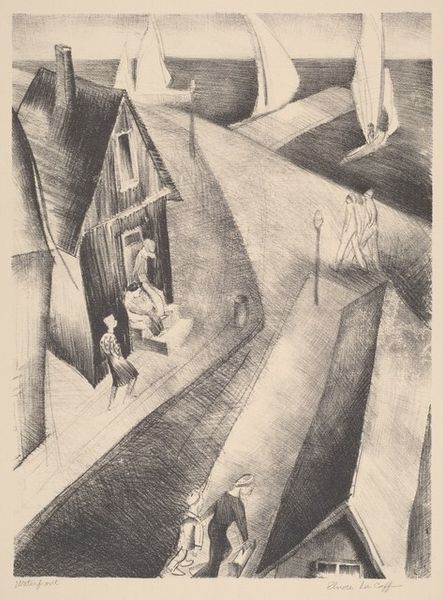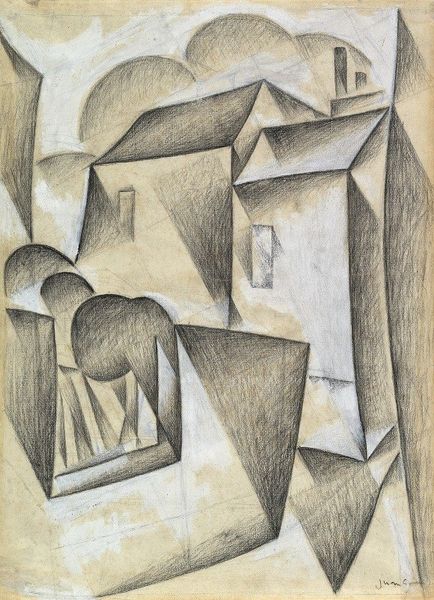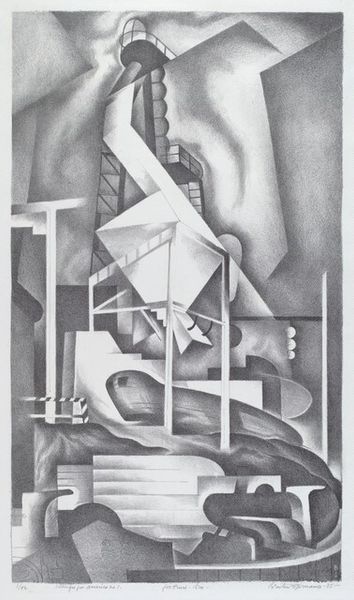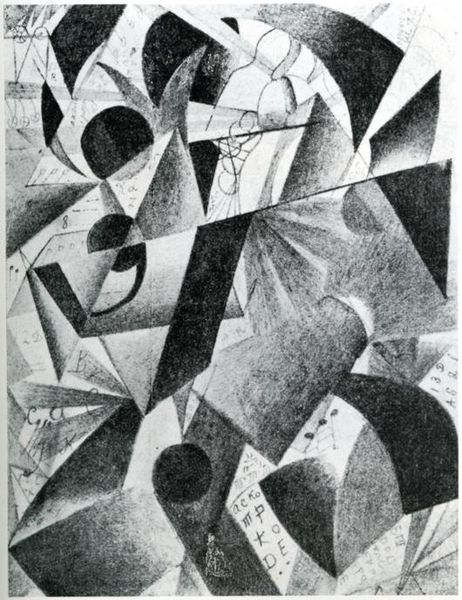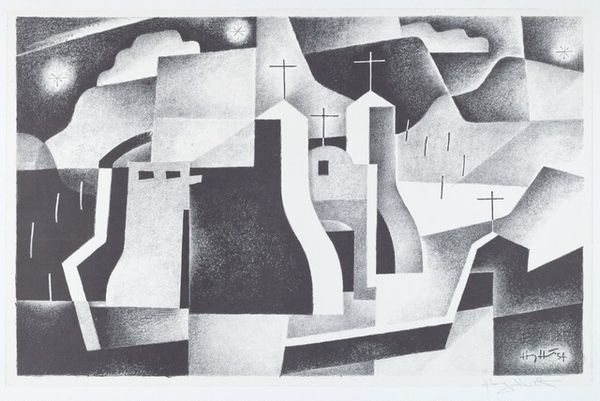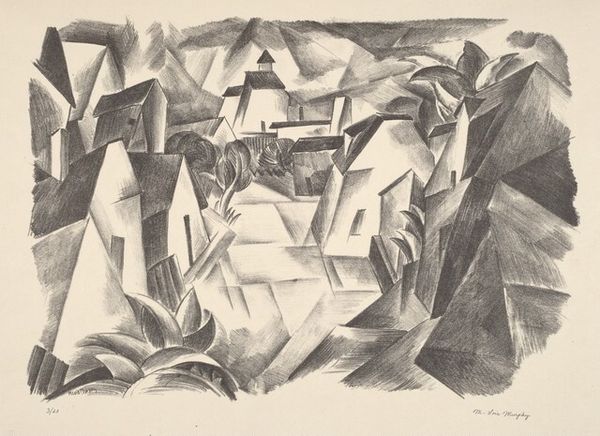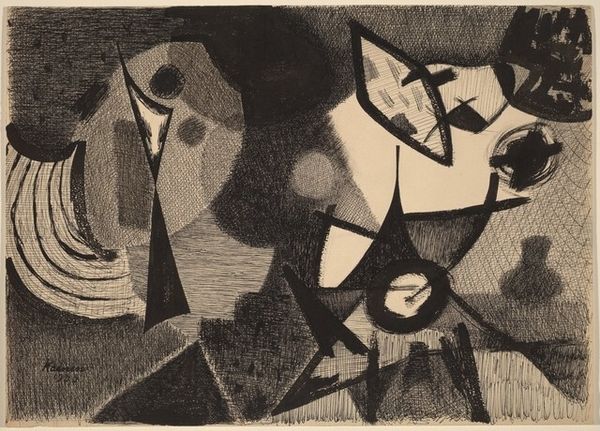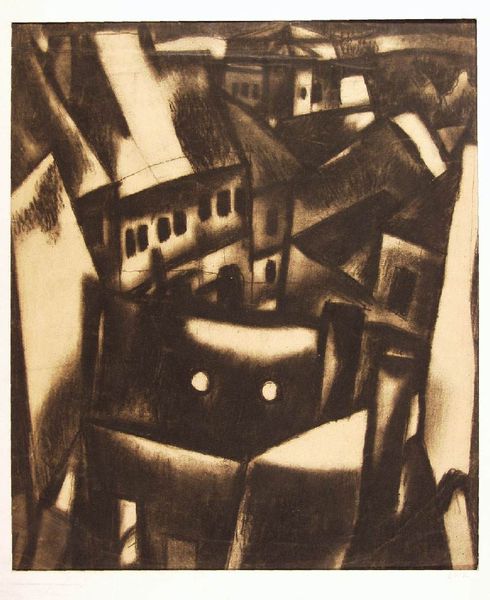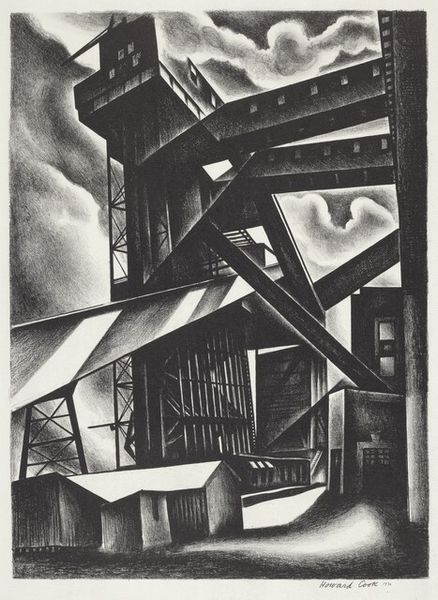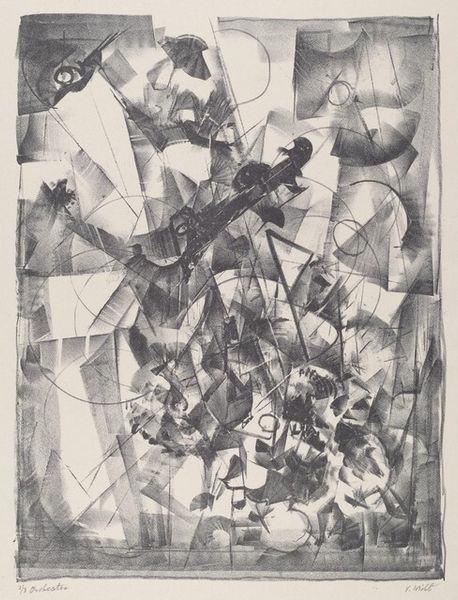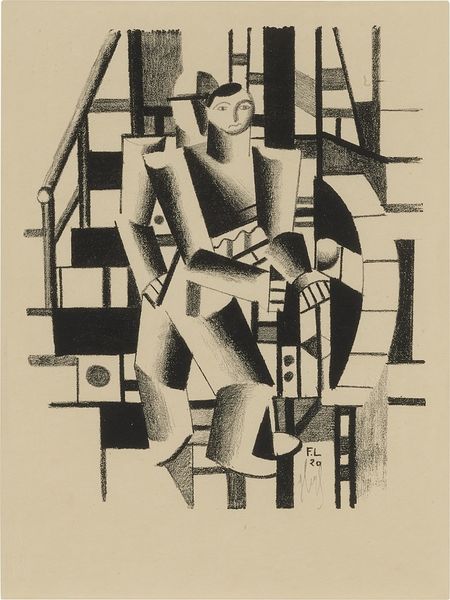
drawing, print, graphite
#
drawing
#
cubism
# print
#
pencil drawing
#
abstraction
#
graphite
#
cityscape
#
modernism
Copyright: National Gallery of Art: CC0 1.0
Curator: Looking at Robert Delaunay’s 1926 work, "The City," one immediately senses a dynamic interpretation of urban life rendered with graphite and pencil. What's your initial take? Editor: I'm struck by its chaotic energy, actually. The monochromatic palette amplifies the disjointed forms and the overall feeling of a city in flux. Curator: Indeed. The Cubist influence is quite apparent. It's not just depicting the city, but deconstructing it. He uses sharp angles and fragmented perspectives that can be traced back to his earlier works, but with an almost anxious quality here, don't you think? Editor: Absolutely. It reflects the societal anxieties of the interwar period, wouldn’t you agree? The city was transforming rapidly—socially, politically, architecturally—and Delaunay captures this sense of unease perfectly. Curator: I see layers of visual information interacting – some blocks resemble classical architecture. Does that reflect a kind of memorial of what had existed? Editor: Yes, these references definitely embed older urban forms into the representation. These subtle hints contrast to the bold abstract statements throughout the rest of the piece, possibly suggesting the old is not completely forgotten. The pencil, not traditionally "heroic" like oil, also fits this mood. Curator: Graphite sketches invite an intimacy with the viewer, a vulnerability that challenges the authority typically associated with the modern city. Editor: True, which then becomes a powerful social commentary. "The City" asks us to not just view urban spaces, but question the very structures that form them. Curator: Reflecting on "The City," its network of fractured forms can really mirror the fragmented realities of urban living and how modern art was embracing this at the time. Editor: A fitting image for understanding not only Delaunay's approach, but also how art acts as both a mirror to society and a critical reflection upon its transformations.
Comments
No comments
Be the first to comment and join the conversation on the ultimate creative platform.

